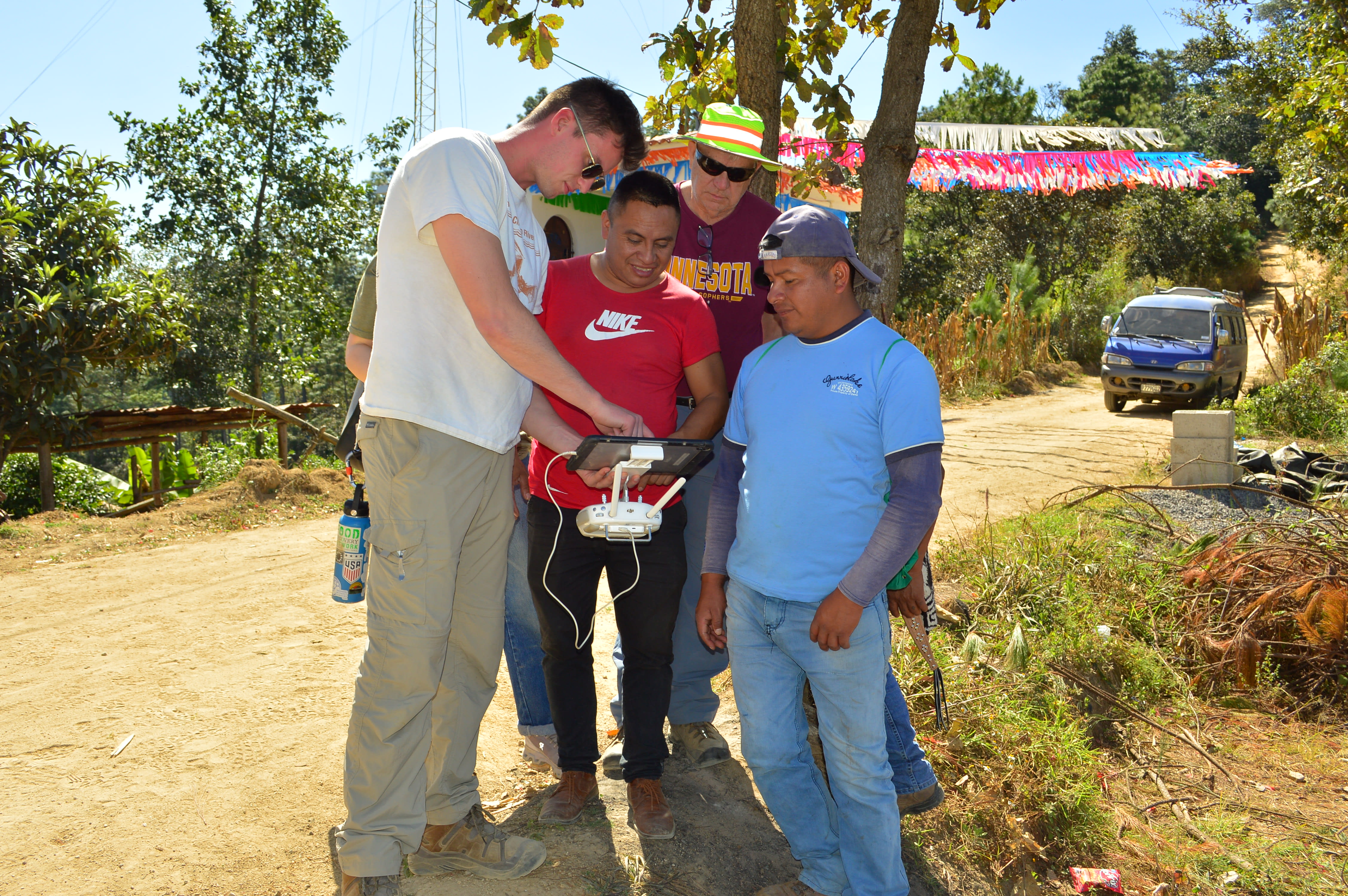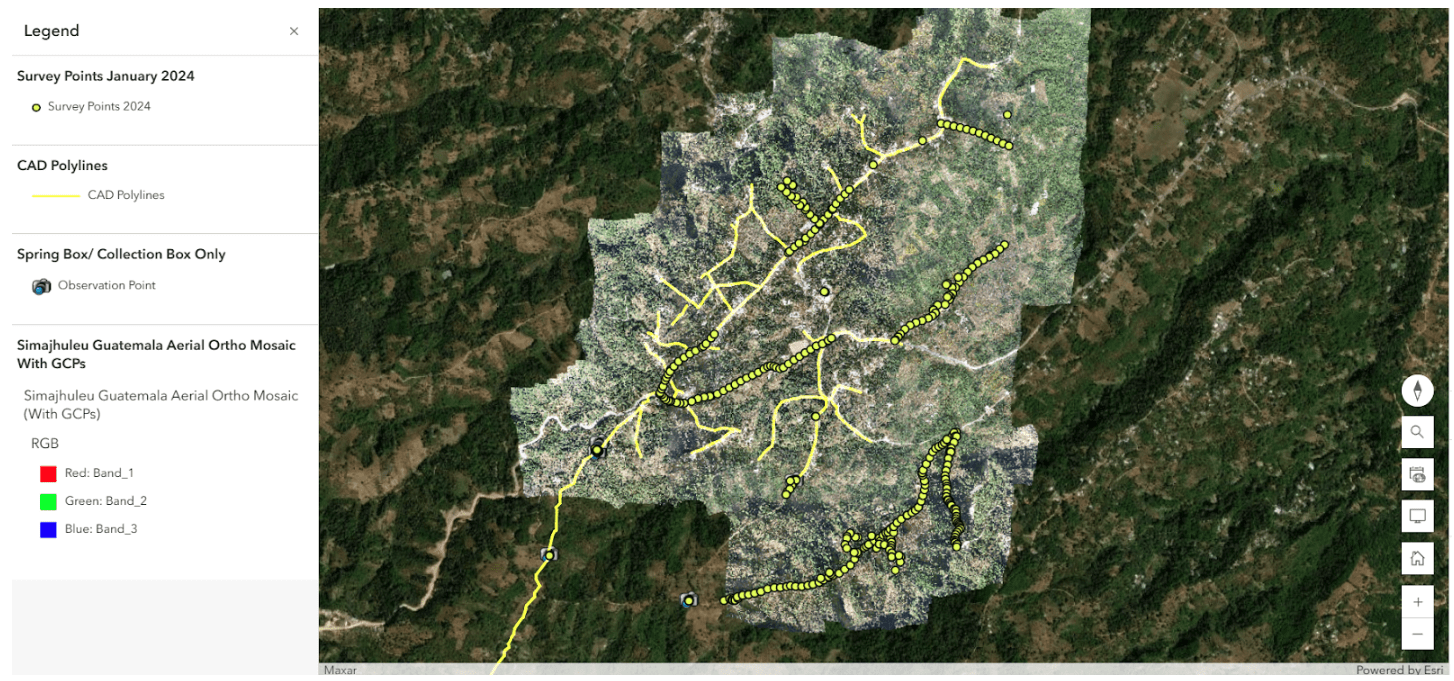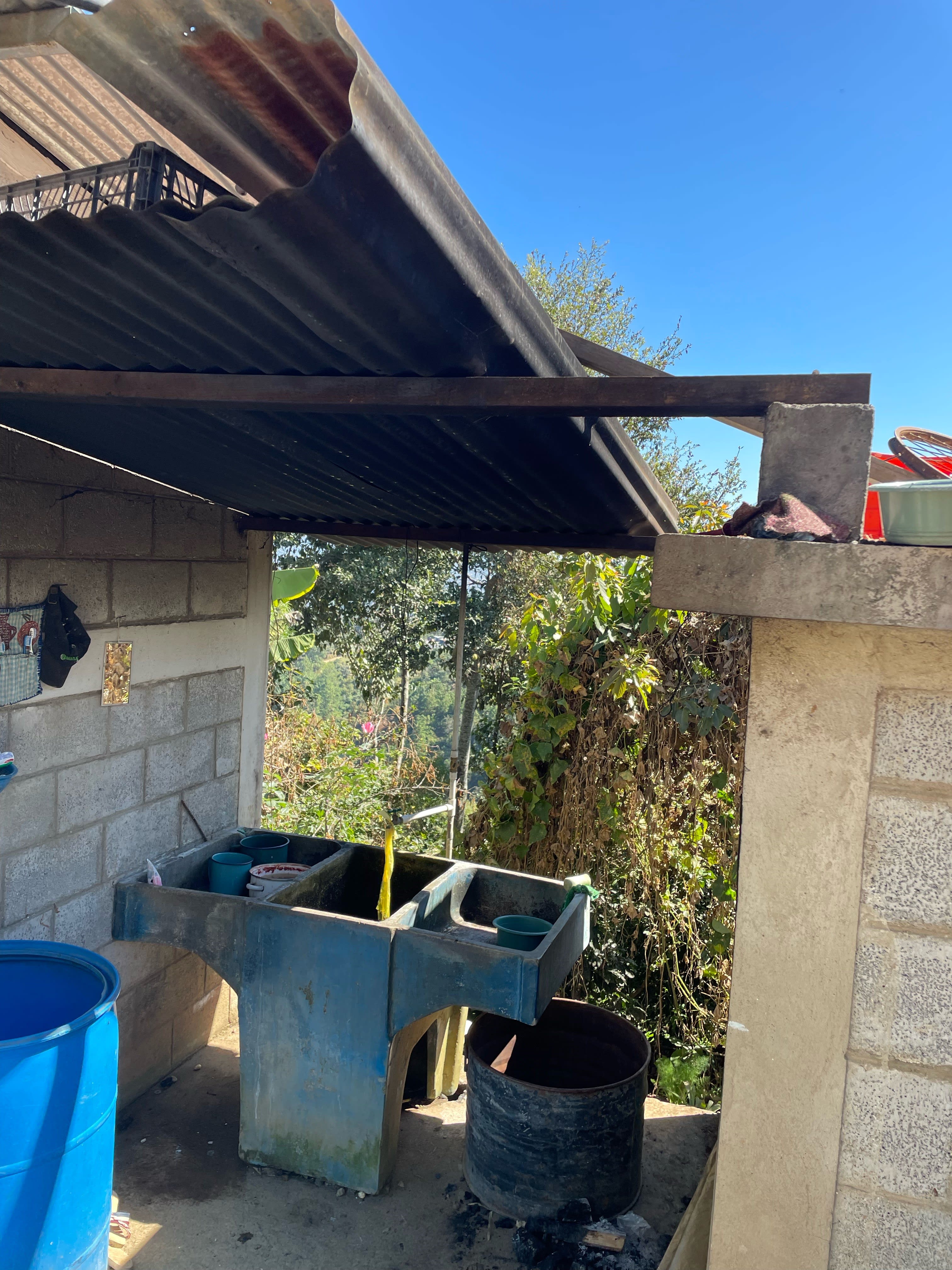Engineers Without Borders: Using mapping technology for sustainable water access
The non-profit organization Engineers Without Borders USA (EWB-USA) works with 148 college and university student chapters in addition to 58 professional chapters to develop sustainable engineering solutions for underserved communities across the globe. Through unique skill building opportunities and apprenticeship-style peer-to-peer exchange, students contribute to life-changing infrastructure projects that enhance health and quality of life for thousands of individuals.

The student-led Engineers Without Borders University of Minnesota Chapter (EWB-UMN) focuses on projects in Guatemala and Malawi in southeastern Africa. Jeff Stewart at Professional Engineering Services has been an industry mentor for EWB-UMN since 2018. He traveled with the group to Simajhuleu, Guatemala, for two weeks over the 2023 winter break.
“We advise the students, help them solve problems without telling them what to do and allow them to learn from mistakes,” Stewart explained. “Students from a broad range of majors participate — biochemistry, civil engineering, mechanical engineering — which brings together a variety of perspectives and skill sets.”
Data to improve the water distribution problem
The team was tasked with finding solutions for Simajhuleu’s water distribution problem. Despite numerous springs in the area and an existing distribution system, 700 households had water access only four hours every four days on a rotating basis. Water capacity through the small pipes could not handle on-demand volume for everyone, especially during busy mornings, and air in the pipes made distribution uneven and inefficient. There were also water quality issues that caused illness and suspected leaks in the aging pipes. Families were forced to fill barrels or tanks to store water for use throughout the week.
The goal of the trip was to collect geospatial data needed to map the village, as well as cultural information about the habits and needs of residents to support the development of a suitable solution. Before leaving for Guatemala, EWB-UMN approached Dylan Jones at Frontier Precision in Minneapolis for advice about surveying technology. To support their efforts, Jones rented the team Trimble equipment at a deeply discounted cost and provided them with dedicated technical assistance via phone.
The students used state-of-the-art mapping methods including Trimble® RTX satellite positioning service with the Trimble R12i GNSS system and Trimble Access™ software on a Trimble TSC7 data collector. For additional insights, personal interviews with community households were documented via phones and ArcGIS Survey123 software and saved to the cloud. Alex Behnke from Westwood Professional Services flew drone coverage of Simajhuleu and developed an orthometrically correct map of the community by using control gathered with the Trimble GNSS system and data collector.
“On previous projects we used old total stations that required three people and were more complex to operate. This time we used Trimble RTX correction service for real-time centimeter-level positioning and Dylan pre-loaded a base map into the data collector before we left,” Stewart said. “We used the UTM coordinate system with the Trimble R12i so the data was easy to load into CAD and combine with images from Google Earth.”

Progress on other water projects
Another project in Malawi involved adding a water system for hand-washing stations and latrines to improve health and reduce the spread of disease among 2,600 students at St. Pius Primary School. Malaria and HIV are major problems in the community. During the 2.5-week assessment / implementation trip in 2024, the team installed the piping system for both sinks and latrines at St. Pius. EWB-UMN also used a Trimble R12i GNSS system and TSC7 controller to collect topographic data to help design a plan for water towers and pipes that avoided tree roots and existing structures. After careful planning, the team will return to Namatapa Primary School in August 2025 to implement the improvements.

A large team of 14 students and six mentors went back to Guatemala in December 2024 to install water meters for 700 households in Simajhuleu. They hope that meters will help pinpoint leaks and reduce the need to store water in barrels.
The EWB model requires communities to contribute labor and/or materials to each project and local people are trained to build systems, join pipes and troubleshoot to find leaks. Follow-up on prior projects is important, so part of the Guatemala team will also visit a nearby village that received three to four miles of water pipes and faucets at 170 houses. With clean water piped to the village, residents no longer have to buy water or carry it from a stream miles away, saving time for the women and children who typically performed this task.
“Working with the students is extremely satisfying,” Stewart said. “I enjoy sharing practical skills not taught in the classroom while students also learn valuable lessons about working on a team, leadership, scheduling, and the importance of helping others.”
Capturing accurate survey data is the first step in any infrastructure or civil engineering project. With easy-to-use, reliable Trimble equipment, the EWB-UMN team gathered the information necessary to develop sustainable practical solutions that will impact the lives of many people.